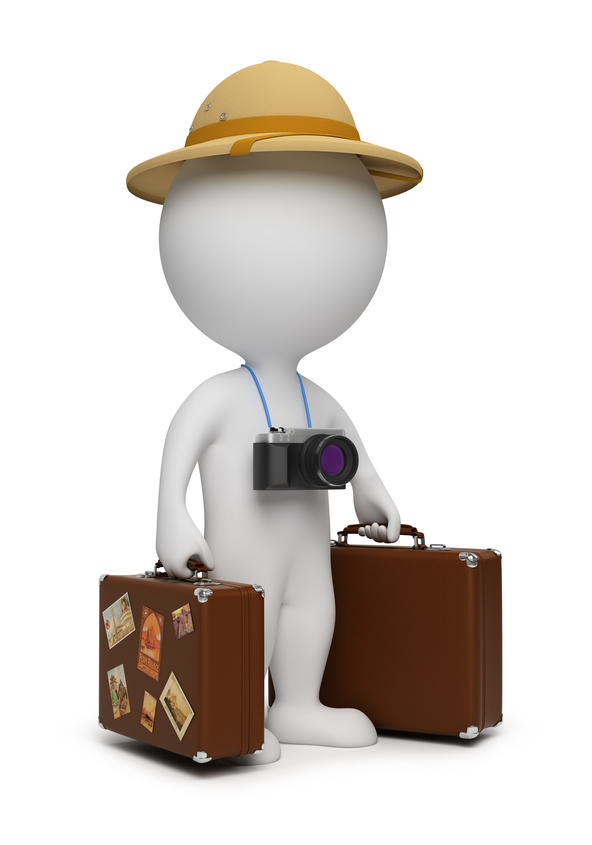Today, we’re looking at BEING PREPARED and TRAVEL, for those of us living with Type 1 diabetes. This post is chock full of great advice, tips and suggestions … you might want to bookmark this for future reference. My next blog will include some Savvy Diabetic fillable PDFs to compile your own Personal Medical Resume, as well as a Go Bag packing list … stay tuned!!!

Carolyn Robertson APRN, MSN, CDE, is a Clinical Nurse Specialist (ACNS-BC) who is certified as a diabetes educator (CDE) as well as board certified in Advanced Diabetes Management (BC-ADM). Ms. Robertson has over 35 years of experience in diabetes education and intensive/flexible diabetes management. She has managed an active patient caseload for more than 30 years. She’s terrific … and recently published a great set of guidelines on traveling for people living with Type 1 diabetes from her group, Strong on Insulin.
Domestic Travel Recommendations
- If you are fully vaccinated:
- You need to self monitor for symptoms
- Wear a mask and take other precautions while traveling.
- If you are not vaccinated, then you need to
- Get tested 1 to 3 days before departure,
- Wear a mask and take other precautions while traveling.
- Get tested 3 days after travel. Self quarantine for 10 days if you do not get tested
- You need to self monitor for symptoms
International Travel Recommendations
- If you are fully vaccinated:
- Mandatory test required before flying back to the US
- You need to self monitor for symptoms
- Wear a mask and take other precautions while traveling.
- Get tested 3-5 days after travel
- If you are not vaccinated, then you need to
-
- Get tested 1 to 3 days before departure,
- Wear a mask and take other precautions while traveling.
- Mandatory test required before flying back to the US
- Get tested 3 – 5 days after travel.
- Self quarantine for 7 days with a test and 10 days if you do not get tested
- You need to self monitor for symptoms
Where ever you travel, plan ahead and have adequate supplies
- Before traveling, pack sanitizing wipes and hand sanitizer with at least 60% alcohol (in case you are unable to wash your hands at your destination).
- Bring your mask to wear at all times — especially while riding on a train or bus, waiting at a rest stop, or riding in a car with people outside your household.
- Bring extra masks in case your mask gets wet or dirty and a plastic bag that can be sealed to store wet or dirty masks.
Avoid touching surfaces
- As much as possible, limit touching frequently touched surfaces such as kiosks, digital interfaces such as touchscreens and fingerprint scanners, ticket machines, turnstiles, handrails, restroom surfaces, elevator buttons, and benches.
- If you must touch these surfaces, as soon as you can, wash your hands for 20 seconds with soap and water or properly apply alcohol based sanitizer containing 60% alcohol, by rubbing the gel all over all surfaces of your hands and fingers until your hands are dry.
- Use touchless payment and no-touch trash cans and doors when available. Exchange cash or credit cards by placing them in a receipt tray or on the counter rather than by hand, if possible.
Do not eat or drink on public transit
- Refrain from eating or drinking on public transit to ensure mask use at all times. Plan to eat and drink outside of the vehicle when you are not near other people.
- If you would like to eat or drink after exiting the public transportation, be sure to find a space at least 6 feet (about 2 arm lengths) away from
- other people
- Wash your hands with soap and water or use hand sanitizer containing at least 60% alcohol before eating or drinking and before removing your mask or touching your face.
Carolyn also shares Traveling Notes If Using Insulin … these are just great tips and reminders under the following headings:
- What items should be brought with me when traveling?
- What precautions are necessary ?
- Should the Insulin Dosage be Changed While Vacationing?
This newsletter on traveling is SO EXCELLENT that I’d recommend that you print a copy and keep it in your suitcase, for the next time you start packing.
Be Prepared: Surviving Natural Disasters with Diabetes was shared by Amber Clour on diaTribe.org, 18 July 2021.
 It may not be possible to anticipate every emergency, but for those with diabetes, it’s especially important to prepare for the unexpected. Hear how people with diabetes survived natural disasters, what they learned about planning ahead, and the advice they have for others. Here are a few stories about how T1Ds survived natural disasters … and their suggestions on how to be as prepared as possible.
It may not be possible to anticipate every emergency, but for those with diabetes, it’s especially important to prepare for the unexpected. Hear how people with diabetes survived natural disasters, what they learned about planning ahead, and the advice they have for others. Here are a few stories about how T1Ds survived natural disasters … and their suggestions on how to be as prepared as possible.
In addition, there are some very helpful sites to make your natural disaster preparation easy:
-
- Diabetes Disaster Response Coalition website
- Patient Preparedness Plan, Diabetes Disaster Response Coalition
- Diabetes Disaster Preparedness Plan, Beyond Type 1
- Tips for Emergency Preparedness, ADA
- My Diabetes Emergency Plan, AACE
And check out some other articles you might want to visit for tips and tricks:
Read more: Be Prepared: Surviving Natural Disasters with Diabetes
 And one more … if you want to sit back and watch a video by Jack Griswold, shown on the JDRF No California Chapter, 25 May 2021. He researched, in great details, lots of information about being prepared, as a person living with Type 1 diabetes.
And one more … if you want to sit back and watch a video by Jack Griswold, shown on the JDRF No California Chapter, 25 May 2021. He researched, in great details, lots of information about being prepared, as a person living with Type 1 diabetes.





If you are in Korea and your pump dies, what you do is hope you have enough syringes to get home.
PS.. Do not tell your wife. I mean really, really do not tell your wife.
Just saying.
Rick … I SO resonate with this!!!!!!!!!!!!!